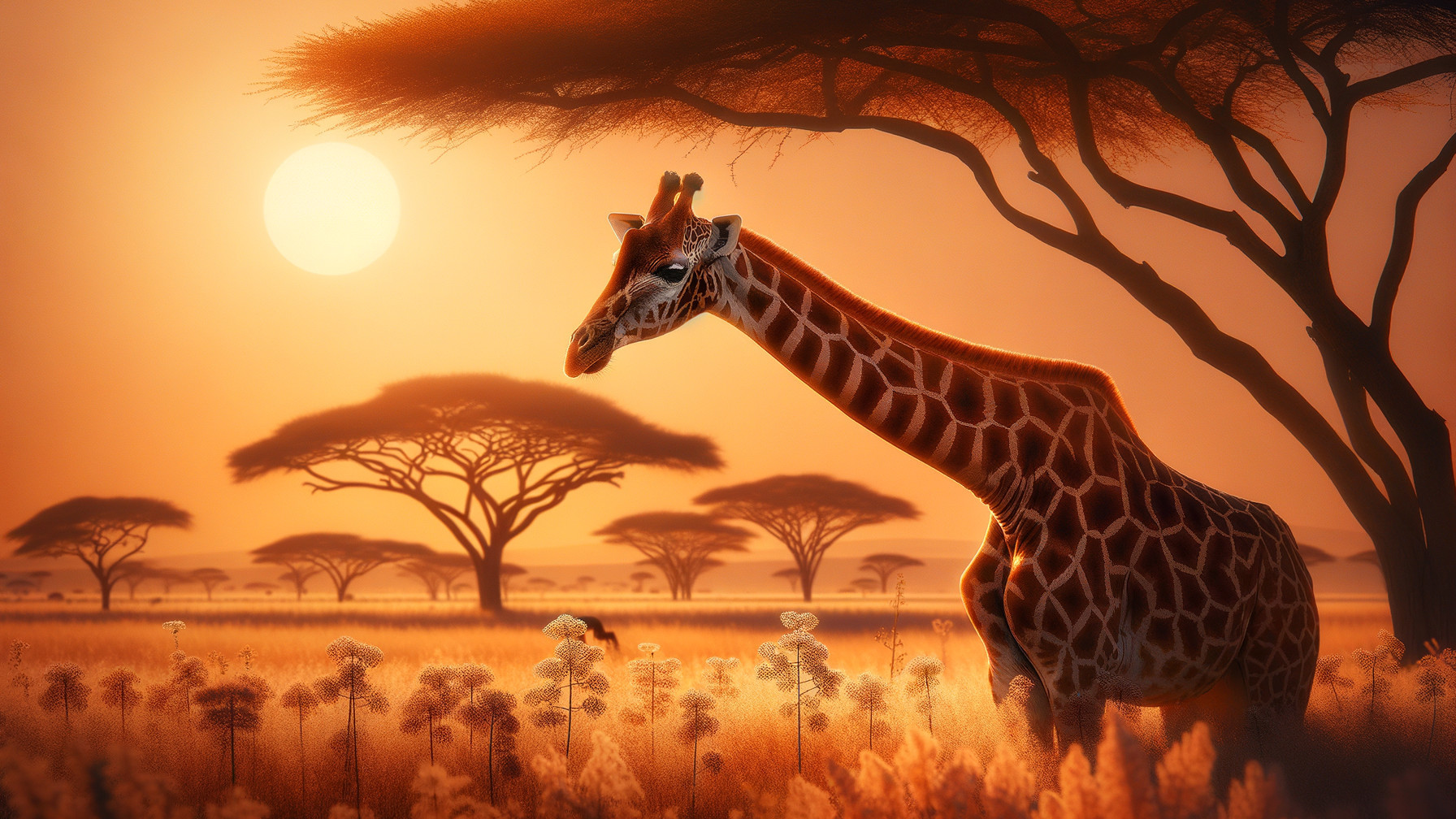Comments
Loading Dream Comments...
You must be logged in to write a comment - Log In

 Artist
Artist
Species: Nubian Giraffe (Giraffa camelopardalis camelopardalis)
Location: Eastern and Central Africa - primarily South Sudan, Ethiopia, Uganda, and Kenya
Status: Critically Endangered (fewer than 3,000 individuals remaining in the wild)
Description & Behavior:
The Nubian Giraffe is one of the most majestic and genetically distinct giraffe subspecies, easily recognized by its pale tan coat marked with large, polygonal chestnut-brown patches separated by bright white lines. Unlike some other giraffes, its spots extend down the legs, and its coat pattern appears almost “painted” - a living artwork of the African plains.
Standing up to 6 meters (19 feet) tall, these gentle herbivores feed mainly on acacia and mimosa trees, using their long prehensile tongues (over 45 cm long!) to pluck tender leaves beyond the reach of other animals. Their enormous height gives them a watchtower’s view over the savanna, and their slow, rhythmic gait is a graceful symbol of Africa’s wilderness.
Despite their calm appearance, giraffes have powerful defensive kicks capable of killing predators like lions. Their eyesight and alert nature make them key sentinels for other wildlife species sharing their habitat.
Threats:
Habitat fragmentation: Expanding agriculture, deforestation, and human settlements have broken continuous savannas into isolated patches.
Poaching: Hunted for meat, hide, and even superstition-based uses of bones and tails.
Civil conflict: Wars and unrest in regions like South Sudan have devastated both giraffe populations and their protected habitats.
Climate change: Droughts and shifts in vegetation patterns reduce available browse for giraffes.
Today, the Nubian giraffe’s range has shrunk by over 90%, and only small, scattered populations survive -many isolated in national parks or reserves.
Conservation Efforts:
Giraffe Conservation Foundation (GCF) and local governments are leading tracking, research, and translocation programs to reconnect isolated groups.
Community-based conservation in Kenya and Uganda encourages locals to protect giraffes as valuable eco-tourism assets.
Genetic studies have revealed that the Nubian giraffe represents a distinct northern lineage, spurring more targeted protection.
Protected areas such as Murchison Falls National Park (Uganda) and Gambella National Park (Ethiopia) now serve as critical sanctuaries.
Thanks to these efforts, some small populations are now showing slow recovery, offering hope for one of Africa’s most iconic yet overlooked giants.
2025 November 02